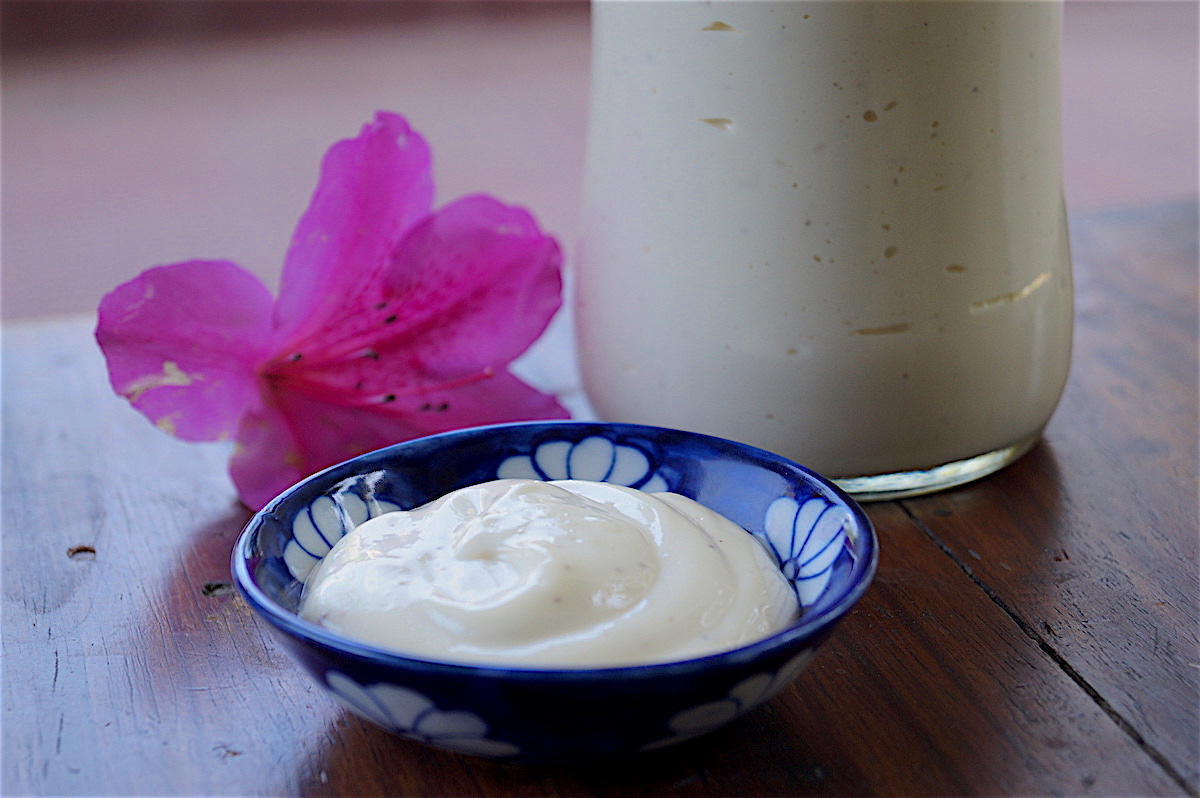![]()

Modified Post: I had posted a recipe for mayonnaise three years ago and after making it a few times in different appliances, realised that it needed a little more body, so I’ve replaced it with completely new proportions. This one is fool proof and uses a lot more oil and fewer everything else from the original but it’s wayyyyy better. We haven’t bought mayonnaise in the last 13 years now. It’s just so simple to make and takes less than 10 minutes. You can literally whip it up just before you need it.
You can experiment with the thickness, add flavour or make an eggless version, and the good part is that it’s all home made, has absolutely no preservatives, has less sugar and salt and keeps in the fridge for at least a month if it even lasts that long. Lots of people use only egg yolk for mayonnaise which makes it richer and heavier. The use of egg whites here not only makes it light but gives it a lovely silken texture. I’ve gone light on the salt and the sugar but you could definitely add a bit more of both if you want more flavour. I prefer my mayonnaise to have a neutral flavour because then I can use it as a base and change up the flavours every time I use a smaller portion for a different dish. The possibilities here are endless.
You can add mayonnaise to a potato salad, sandwiches, burgers, use it as salad dressings or use as a dipping sauce to grilled fish and meats and vegetables. You can apparently add it to cakes as well, though that’s something I don’t think I’ll be trying. Cakes are heavy enough on their own. Most people avoid mayonnaise because it’s too fattening but believe me, in some dishes it’s irreplaceable. Say what you may, but you’ll be hard pressed to replace the texture of a well made mayonnaise with anything else. In my mayonnaise, I’ve still gone lighter on the oil. If you want a thicker mayonnaise, you could add about 100 to 150 ml more oil.
Ingredients
2 eggs (about 100 gms)
2 tsp vinegar (14 ml)
1/2 tsp salt (3 gms)
½ tbsp sugar (8 gms)
1 tbsp dijon mustard (18 gms) or english mustard or mustard powder
2 cups vegetable oil (400 ml)
Get started
If using a food processor
- Put the eggs, vinegar, salt, sugar and mustard in the food processor and whizz nicely till all the sugar has dissolved and the rest of the ingredients have blended together. About a minute.
- Then with the motor running steadily pour oil in a slow trickle through the food processor chimney about 40 ml at a time and keep the processor running for about 30 seconds after each addition for it to blend well. Continue this way till all the oil has been poured in and you get the thickness you desire. After all the oil has been poured in keep the processor running for a minute or two more to get a good silky texture. Use more oil if you want a thicker consistency. The mayonnaise should be silky and should have the consistency of yoghurt.
- Pour or spoon the mayonnaise into a sterilised glass jar and refrigerate.
If using a mixie or blender
- Put the eggs, vinegar, salt, sugar and mustard in the mixie blender and blend till all the sugar has dissolved. About 30 seconds.
- Open the lid, add 1/3 oil, close the lid and blend for another 30 seconds. Repeat two more times. Check the consistency and the flavour. Add more salt or mustard if you want and blend for a bit. If it is too runny, you can add more oil and blend for another minute.
If you don’t have either of these appliances, you can always whisk it by hand. It’ll take some muscle power and slightly longer but you’ll have a great product either way.
Important notes: The amount of oil required depends on the size of eggs. The larger the eggs, the more oil you would need for the mayonnaise to thicken for the consistency you would require. If your eggs are small, put a little less oil at first in the three stages. If the eggs are large, keep a bit of extra oil and add conservatively into the mixie in stages if you are using that and not a food processor.
In a food processor the raised chimney-like opening allows you to pour the oil in a stream and see the emulsification because of the transparent body. In a mixie you won’t be able to see the process if it has a steel container and won’t be able to pour the oil in a stream. You will need to keep opening the lid to check if it’s done. It’s still just as easy. I used a food processor for this one and a mixie for the previous one.


